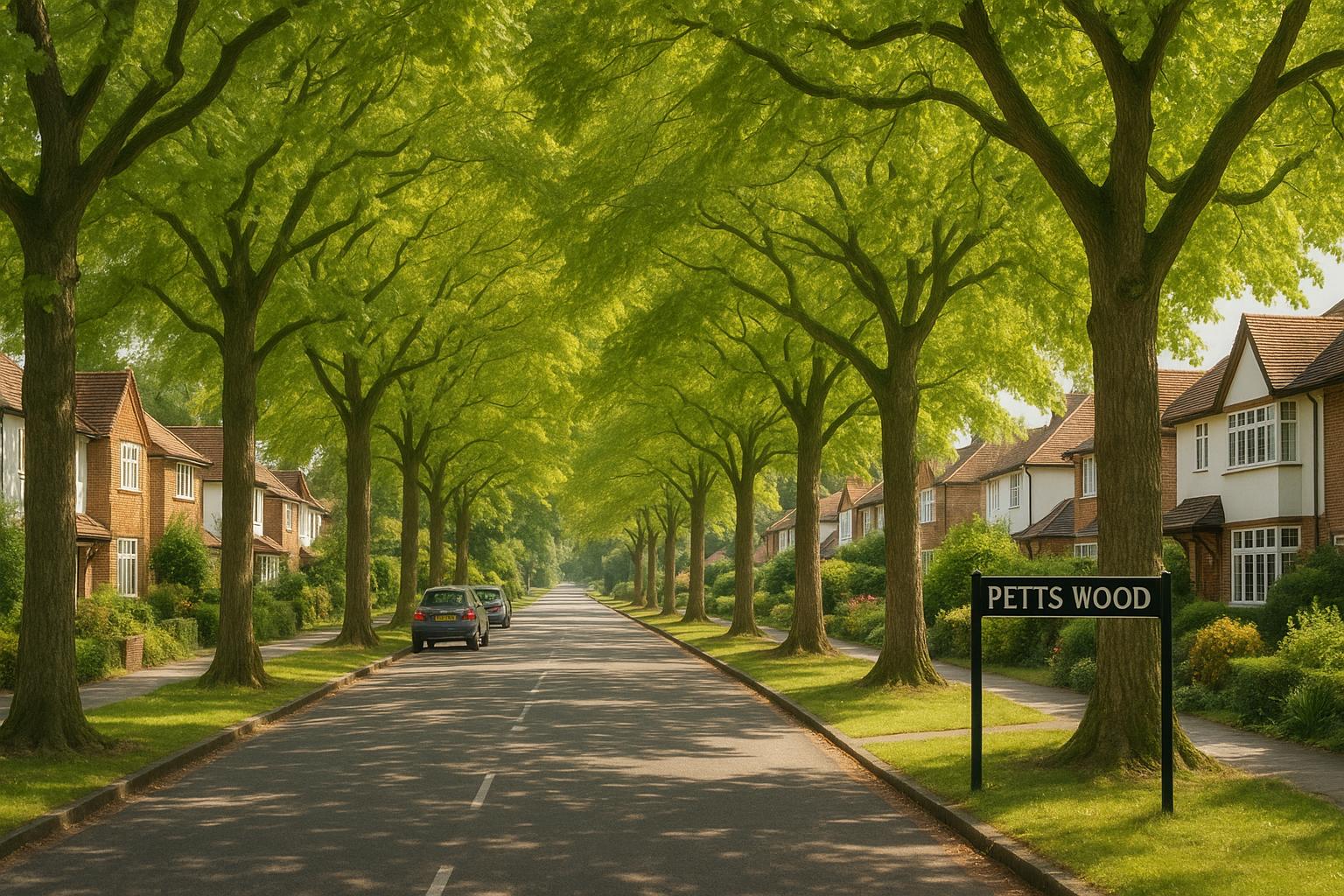A neighbourhood in South London has been recognised as one of the least deprived areas in England, according to the latest release of the Indices of Multiple Deprivation (IMD). Petts Wood, located in the borough of Bromley, stands out as the only London neighbourhood to feature in the national top 20 list of least deprived areas, joining affluent locations such as Harpenden in Hertfordshire and Henley-on-Thames in Oxfordshire.
Petts Wood is widely regarded as a desirable residential area, famed for its leafy streets, spacious detached homes, and excellent commuter links to central London. Positioned between Orpington and Chislehurst, it attracts families with its high-performing schools, independent shops, and convenient access to green spaces like Jubilee Country Park. The average house price in Petts Wood over the last year was approximately £674,600, slightly above the London average of £663,189. Semi-detached properties dominate local sales, with an average price of £710,487, while detached homes fetch close to £986,229. House prices in the area have increased by around 2% compared to the previous year, maintaining values near the peak seen in 2021.
The IMD, updated for the first time since 2019, is published every four years by the Ministry of Housing, Communities and Local Government and is regarded as the most authoritative resource on poverty and inequality at a local level in England. The Indices assess deprivation by analysing multiple factors including income, employment, education, health, crime, housing conditions, and the local environment. Data is gathered at the level of Lower-layer Super Output Areas (LSOAs), small neighbourhood units with populations averaging around 1,500 people. The latest data update reflects the socioeconomic impact of the Covid-19 pandemic on communities.
At the opposite end of the scale, the most deprived area in England has again been identified in Jaywick, Clacton-on-Sea, Essex, within Nigel Farage’s parliamentary constituency. This area, officially known as Tendring 018A, retains its status as the highest scoring for deprivation nationally since the previous assessment. The findings highlight persistent inequality with several other parts of Blackpool also ranking among the most deprived. In fact, Blackpool is the most deprived local authority in England by average IMD scores, followed by areas such as Middlesbrough, Burnley, Manchester, and Birmingham. Conversely, the least deprived local authority is St Albans in Hertfordshire.
Within St Albans and its surrounds, particularly Harpenden, neighbourhoods such as Dalkeith Road and parts of Maple Road and Park Avenue are noted among the top least deprived in the country. These areas share characteristics with Petts Wood, including strong local amenities, good schools, and affluent populations, emphasising the geographical and economic contrasts present across England.
The IMD rankings serve as a vital tool for policymakers, local authorities, and community organisations to target resources and address disparities. They capture a complex picture of deprivation but also highlight areas achieving resilience and prosperity amidst broader societal challenges, particularly as communities continue to recover from the pandemic’s effects.
📌 Reference Map:
- Paragraph 1 – [1] (MyLondon)
- Paragraph 2 – [1] (MyLondon)
- Paragraph 3 – [1] (MyLondon), [2], [3], [4], [5], [6], [7] (gov.uk)
- Paragraph 4 – [1] (MyLondon)
- Paragraph 5 – [1] (MyLondon)
- Paragraph 6 – [1] (MyLondon)
Source: Noah Wire Services
